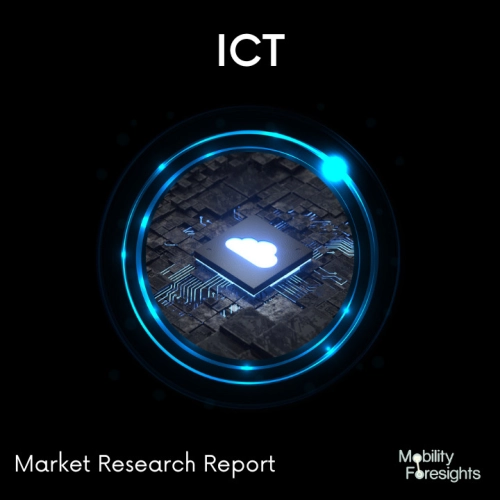
- Get in Touch with Us

Last Updated: Apr 25, 2025 | Study Period: 2024-2030
A Super Junction MOSFET is a type of Power MOSFET that uses a combination of multiple epitaxial layers and highly engineered doping profiles to reduce the resistance of the power MOSFET and increase its power switching efficiency.
This type of MOSFET is designed to reduce the amount of energy used during switching operations and improve overall device performance. It is well suited for use in power converters and amplifiers.
The Super Junction MOSFET utilizes the concept of the vertical device structure by placing multiple epitaxial layers on top of the main silicon substrate. These layers are carefully doped to create a series of âsuperjunctionâ regions that act as a single large junction.
By having a larger junction area, the Super Junction MOSFET is able to reduce the amount of resistance experienced during power switching operations. Additionally, the Super Junction MOSFET is able to reduce the amount of heat generated during switching operations. This, in turn, allows for improved device performance and greater power switching efficiency.
The Super Junction MOSFET has a number of advantages over traditional power MOSFETs. It can reduce the switching losses associated with power converters and amplifiers while still providing reliable switching operations.
Additionally, the Super Junction MOSFET allows for faster switching operations, which can increase the overall performance of a device. Finally, the Super Junction MOSFET is able to reduce the amount of heat generated during switching operations, which can improve the deviceâs reliability and longevity.

The Global EV Super junction MOSFET market accounted for $XX Billion in 2023 and is anticipated to reach $XX Billion by 2030, registering a CAGR of XX% from 2024 to 2030.
The 600V αMOS7 Super Junction MOSFETs Family has been released, according to Alpha and Omega Semiconductor Limited, a designer, developer, and worldwide supplier of a wide range of power semiconductors and power ICs, as well as digital power products. The next generation high voltage MOSFET from AOS, called αMOS7, is made to meet the high density and high-efficiency requirements of solar inverters, motor drives, servers, workstations, telecom rectifiers, EV charging, and industrial power applications.
There is a need for next-generation SJ technologies that are sufficiently robust and charge less. In temporary and unusual circumstances, low Qrr and Trr are also essential for LLC and PSFB applications. For the above needs, the best solution is the AOS αMOS7 High Voltage SJ MOSFET.
Low-ohmic SMD devices, which use 3D mechanical and thermal designs to achieve smaller form factors, are quickly taking the lead in solar applications. A variety of Rdson granularity and SMD package options, including DFN, TOLL, and Top-cooling variants, are offered by αMOS7. Solid-state relays and Active Bridges are examples of low FW applications where FETs must adhere to strict SOA specifications to support surge and in-rush currents. Low Rdson's temperature coefficient and robustness against transient voltage and current overstress are guaranteed by αMOS7.
With the release of the new CoolMOS PFD7 high-voltage MOSFET family, Infineon Technologies has raised the bar for 950 V superjunction (SJ) technology. The new 950 V series boasts an integrated fast body diode that ensures a robust device and, consequently, a lower bill-of-material (BOM) while combining exceptional performance with cutting-edge usability.
The new products, which are designed for the highest efficiency and ultrahigh power density, are mainly intended for lighting systems and consumer and industrial SMPS applications. The new products are appropriate for LLC/LCC, flyback, PFC, and half- or full-bridge configurations that provide robust and dependable commutation. They provide hard commutation toughness and dependability by combining an ultra-fast body diode with an ultra-low reverse recovery charge.
THIS EV SUPER JUNCTION MOSFET MARKET REPORT WILL ANSWER FOLLOWING QUESTIONS
| Sl no | Topic |
| 1 | Market Segmentation |
| 2 | Scope of the report |
| 3 | Abbreviations |
| 4 | Research Methodology |
| 5 | Executive Summary |
| 6 | Introduction |
| 7 | Insights from Industry stakeholders |
| 8 | Cost breakdown of Product by sub-components and average profit margin |
| 9 | Disruptive innovation in the Industry |
| 10 | Technology trends in the Industry |
| 11 | Consumer trends in the industry |
| 12 | Recent Production Milestones |
| 13 | Component Manufacturing in US, EU and China |
| 14 | COVID-19 impact on overall market |
| 15 | COVID-19 impact on Production of components |
| 16 | COVID-19 impact on Point of sale |
| 17 | Market Segmentation, Dynamics and Forecast by Geography, 2024-2030 |
| 18 | Market Segmentation, Dynamics and Forecast by Product Type, 2024-2030 |
| 19 | Market Segmentation, Dynamics and Forecast by Application, 2024-2030 |
| 20 | Market Segmentation, Dynamics and Forecast by End use, 2024-2030 |
| 21 | Product installation rate by OEM, 2023 |
| 22 | Incline/Decline in Average B-2-B selling price in past 5 years |
| 23 | Competition from substitute products |
| 24 | Gross margin and average profitability of suppliers |
| 25 | New product development in past 12 months |
| 26 | M&A in past 12 months |
| 27 | Growth strategy of leading players |
| 28 | Market share of vendors, 2023 |
| 29 | Company Profiles |
| 30 | Unmet needs and opportunity for new suppliers |
| 31 | Conclusion |
| 32 | Appendix |